Foot health is a crucial component of overall body health. However, many people only realize they might have foot problems when they experience foot pain, discomfort, or gait abnormalities. Abnormalities in the arch of the foot, especially flat feet and high arches, are often closely related to foot discomfort. Traditional diagnostic methods are often inadequate for accurately identifying subtle changes in arch shape, but the advent of the foot arch scanner has provided a revolutionary solution for foot health management. The foot arch scanner not only measures the arch precisely but also helps doctors scientifically diagnose flat feet and high arches, offering personalized foot health management services to patients.
Foot Arch Scanner: A Technological Pioneer in Modern Foot Health
The foot arch scanner is a high-precision foot inspection tool that uses advanced technology to comprehensively scan and analyze the structure of the foot. Unlike traditional visual checks, the foot arch scanner provides more accurate data through detailed measurements. It helps doctors analyze the height and shape of the foot arch, determining whether issues such as flat feet or high arches are present. Based on this data, doctors can create personalized treatment or correction plans to address potential foot problems.
The foot arch scanner works using advanced sensors and imaging technology that can accurately capture and present three-dimensional foot data. Through data analysis, the scanner generates a detailed model of the foot's sole and displays the shape and changes in the arch. This not only provides accurate assessments of arch height but also helps identify early symptoms of flat feet and high arches, preventing further deterioration of the problem.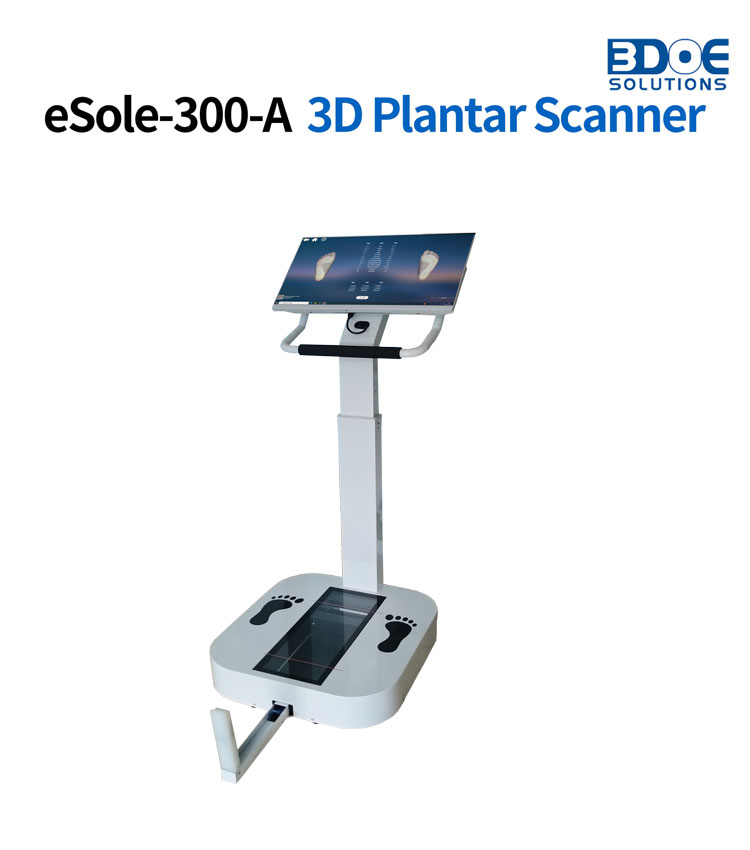
The Importance of Arch Shape
The foot arch is a crucial structure that supports the entire body’s weight. The function of the arch is to distribute the shock from the ground and maintain balance during standing and walking. A normal arch effectively supports the body's weight, while abnormal arches can negatively affect the feet, knees, and even the lower back.
The Dangers of Flat Feet
Flat feet typically refer to a condition where the arch is too low or completely absent, resulting in an increased surface area of contact between the foot and the ground, leading to uneven pressure distribution. Common symptoms include:
Foot pain: Especially plantar fasciitis, causing aching in the soles of the feet.
Unstable gait: Insufficient arch support can cause the feet to pronate inward while walking, increasing the risk of sprains.
Knee, hip, and spine problems: Foot issues can transfer stress to the upper body, causing pain in the knees, hips, and spine.
Challenges of High Arches
In contrast to flat feet, high arches refer to a condition where the arch is excessively high, typically presenting the following symptoms:
Uneven pressure distribution: The forefoot and heel may bear excessive pressure.
Increased foot pain: Especially after prolonged standing or walking, leading to fatigue and discomfort in the feet.
Unnatural gait: People with high arches often have unstable gaits, which can lead to ankle sprains and other injuries.
Whether flat feet or high arches, both can lead to a series of foot, joint, and even overall health problems. Without timely intervention, these problems can worsen, affecting daily activities and quality of life.
The Application of the Foot Arch Scanner in Diagnosing Flat Feet and High Arches
Accurate Measurement of Arch Height
The foot arch scanner can measure the height of the arch with great precision. The scan results clearly display the shape and any abnormalities in the arch. Traditional methods of checking the arch often rely on subjective judgment, which can lead to errors. In contrast, the foot arch scanner uses scientific methods to provide a comprehensive and accurate assessment of the arch.
Normal arch: Typically shows moderate curvature, with even pressure distribution.
Flat feet: The arch is lower than normal or almost nonexistent, resulting in pressure concentrated on the inner sole of the foot.
High arches: The arch is too high, with pressure concentrated on the heel and forefoot, leading to poor foot stability.
Dynamic Gait Analysis
In addition to static arch measurements, the foot arch scanner also provides dynamic gait analysis, recording the posture and pressure changes in the feet while walking or running. This is especially important for identifying gait abnormalities caused by flat feet or high arches.
Flat feet patients often exhibit excessive pronation, which increases the load on the knees, hips, and lower back.
High arch patients typically display an outward gait, increasing the risk of spraining the ankle and other motion-related injuries.
Identifying and Diagnosing Foot Problems
With the help of the foot arch scanner, doctors can identify potential foot issues and provide professional diagnoses based on detailed data analysis. Traditional methods may overlook subtle abnormalities in the feet, possibly leading to misdiagnosis. The foot arch scanner, however, helps doctors accurately assess a patient’s foot health according to scientific standards, providing detailed data to inform correction plans.
Customized Correction Plans: The Key to Solving Foot Problems
Once a foot arch issue is diagnosed using the foot arch scanner, the next step is to create a personalized correction plan. The correction plan will differ based on the specific needs of flat feet or high arches.
Correction Plan for Flat Feet
Customized insoles: Based on the data provided by the foot arch scanner, bespoke insoles are designed to offer the necessary arch support, helping restore a normal gait.
Strengthening arch muscles: Through specific exercises and treatments, the muscles supporting the arch are strengthened to improve arch stability.
Proper shoe selection: Shoes with adequate support and cushioning are recommended to reduce the additional pressure caused by flat feet.
Correction Plan for High Arches
Customized insoles: High arch patients often need insoles that distribute pressure, especially around the heel and forefoot.
Gait adjustment: Through gait training and treatment, the walking pattern of high arch patients is adjusted to improve posture and reduce the risk of sprains.
Shoe recommendations: High arch patients can choose shoes with better shock absorption to alleviate discomfort from gait instability.
Through the precise data analysis provided by the foot arch scanner, correction plans are more targeted, and the results are more effective.
Advantages and Future Prospects of the Foot Arch Scanner
As an important tool in modern medicine and health management, the foot arch scanner offers numerous advantages:
High precision: Compared to traditional manual checks, the foot arch scanner provides more accurate data, reducing misdiagnosis.
Efficiency and convenience: The entire detection process is non-invasive and quick, providing a comfortable experience for patients.
Data visualization: The three-dimensional images and data reports generated by the scanner are intuitive and easy to understand, allowing patients to clearly see their foot health status.
Personalized service: Based on the data provided by the foot arch scanner, doctors can customize treatment and correction plans for each patient.
With the advancement of technology, foot arch scanners will become even more powerful. In the future, they may integrate with more advanced technologies, such as artificial intelligence and big data analysis, to provide smarter and more convenient services for foot health management.
By accurately measuring arch shape and dynamic gait, the foot arch scanner can effectively diagnose flat feet, high arches, and other foot problems, helping patients create personalized correction plans. Whether alleviating foot pain, improving gait, or preventing further joint damage, the foot arch scanner offers a one-stop scientific solution for foot health. If you're struggling with foot problems, consider using the foot arch scanner to assess your foot health scientifically and begin your recovery journey

 +86-0755-86131192
+86-0755-86131192 2024-11-20
2024-11-20 Back to list
Back to list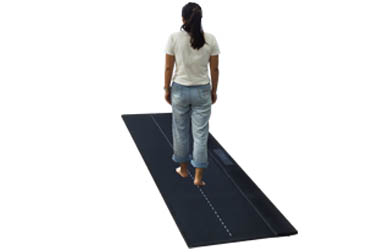
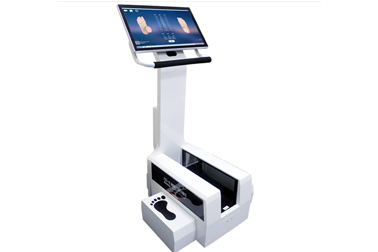
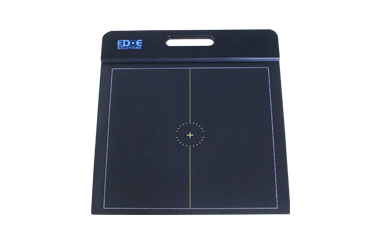
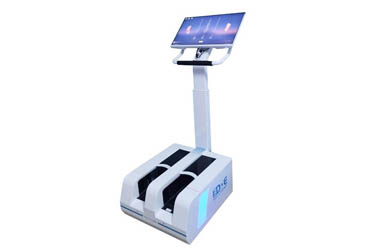
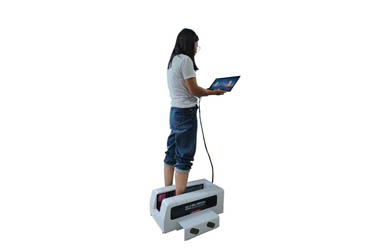



 +86-0755-86131192
+86-0755-86131192